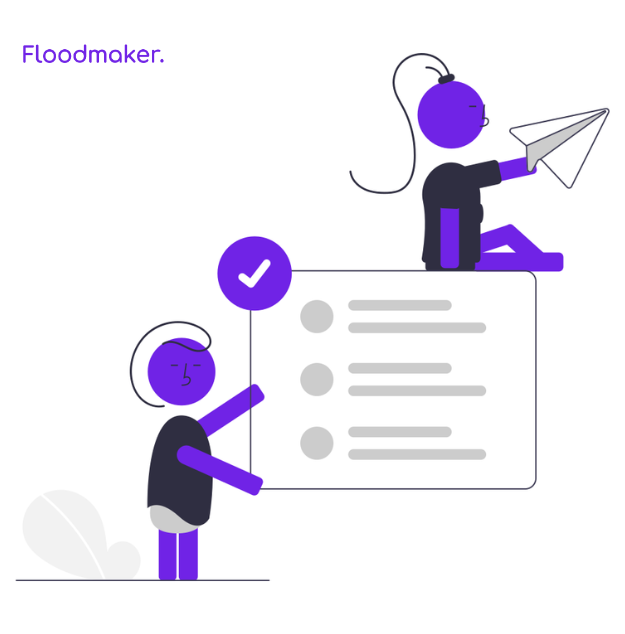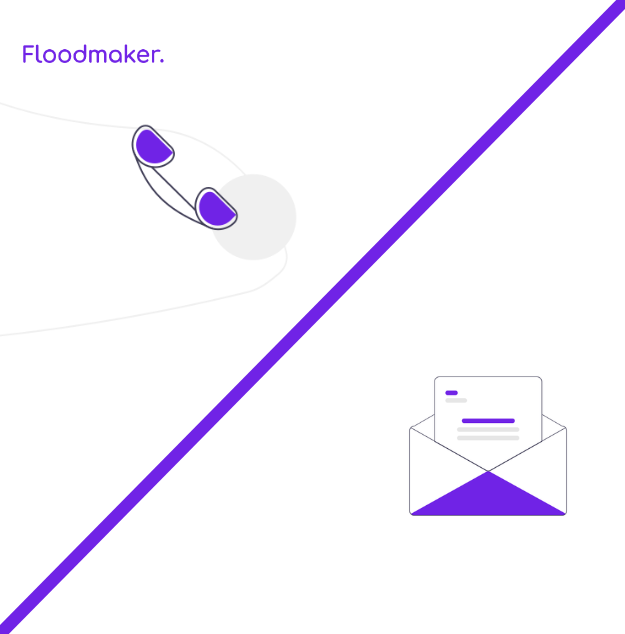If you want to reach out to potential customers, but aren’t sure how to go about it, you’re not alone. Many people face the same decision: should you use cold email prospecting or give cold calling a try? It might seem like a tough choice, but it’s simpler than it seems.
Cold temperatures often get a bad reputation, considered the enemy of comfort.
In a humorous example, we joke that nine out of ten people would rather be warm than cold, which explains why rent is sky-high in sunny Southern California, while a mansion in chilly North Alaska could cost as little as $150 and a jar of maple syrup.
However, we’re here to make a case for the benefits of being cold, particularly when it comes to your business.
Consider the example of ice baths. Submerging yourself in a tub of ice-cold water can:
- Boost circulation
- Enhance energy, productivity, and quality of life
- Accelerate muscle recovery
- Decrease inflammation
- Strengthen the immune system
- Reduce anxiety and stress
Though we’re not scientists, these benefits seem impressive and all come from the power of cold.
If cold can do all of this for our bodies, why couldn’t it also benefit our businesses? We think it makes perfect sense. At Floodmaker, we believe in growing brands with effective cold outreach, just like you’d improve your body with cold treatments.
However, cold outreach often gets overlooked in favor of other strategies. Our research shows that cold outbound prospecting can yield better results than warm, inbound marketing.
So, don’t let your preference for warmth prevent you from exploring the benefits of cold outreach.
You’re likely already interested in adding cold prospecting to your marketing plan, or you wouldn’t be reading this article. And while we’ve thrown in some health tips for good measure, you’re probably here to figure out the best cold outreach method for your business: cold calling or cold emailing?
Let’s dive in and find out.
Cold Email Prospecting vs. Cold Calling 101:
The main difference is in the names—one involves sending emails, and the other involves making phone calls.
Both strategies target potential customers who are not yet familiar with your brand. They represent the initial stage of lead generation, reaching out to prospects without prior contact. The main goals are to increase brand awareness and encourage further interaction.
However, for this discussion, we will define cold calling as making phone calls to potential customers.
Why Choose Cold Calling?
Many sales reps view cold calling as more personal than emailing. Speaking directly to someone and hearing their voice creates a more engaging experience than reading a text message.
Phone calls are also harder to ignore.
Consider how easy it is to pretend you never received a text message. Now, think about how guilty you feel when you dodge someone’s phone calls and don’t call them back.
Face-to-face meetings are highly successful because they foster a meaningful connection. While emailing is more distant, calling is a middle ground that can help build a connection.
Albert Mehrabian’s 7-38-55 Rule of Personal Communication suggests:
- 7% of a message is conveyed through words
- 38% through the tone of voice
- 55% through facial expressions or body language
By this standard, cold calling has a 31% greater chance of effectively communicating your message than emailing.
Why Choose Cold Email Prospecting?

Cold emailing is a more convenient way to contact people than cold calling. Here’s why:
- Emailing is Easier and Less Stressful: It’s simpler to send a quick message than to make a phone call.
- Emailing is Less Intrusive: Sales reps find emailing less invasive. Calling interrupts someone’s day, while emailing allows them to respond when it suits them.
- Short Attention Spans: It’s challenging to hold someone’s attention during an unsolicited sales pitch. Emailing allows the recipient to choose when and if to engage.
- Brand Perception: Cold calls can harm your brand’s image if they irritate potential customers. Emails are less intrusive and less likely to annoy.
Which Should You Choose?

While both methods have their merits, we generally recommend cold emailing for its efficiency and convenience.
Emailing saves time and money, allowing you to reach more people with less effort. It also lets prospects respond on their terms, creating a non-threatening interaction that often yields better results.
However, that doesn’t mean you should abandon cold calling entirely. Phone calls have a response rate of over 8% and account for 92% of all customer interactions.
Use both strategies together to maximize your outreach. Start with a cold email, and follow up with a phone call to create a “lukewarm” interaction that can lead to better results.
Using multiple outreach methods is 3X more successful than using just one.
Conclusion
While both cold emailing and cold calling have their places in a comprehensive outreach strategy, starting with cold emailing is generally the more effective choice. Follow up with a phone call to enhance your efforts and create a multi-faceted approach to lead generation.
So, don’t hesitate—embrace the power of cold outreach today and see how it can transform your business.
If you want a company that incorporates the best cold outreach practices and can help you implement unique email campaign, check out our services here!
